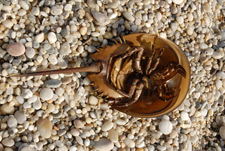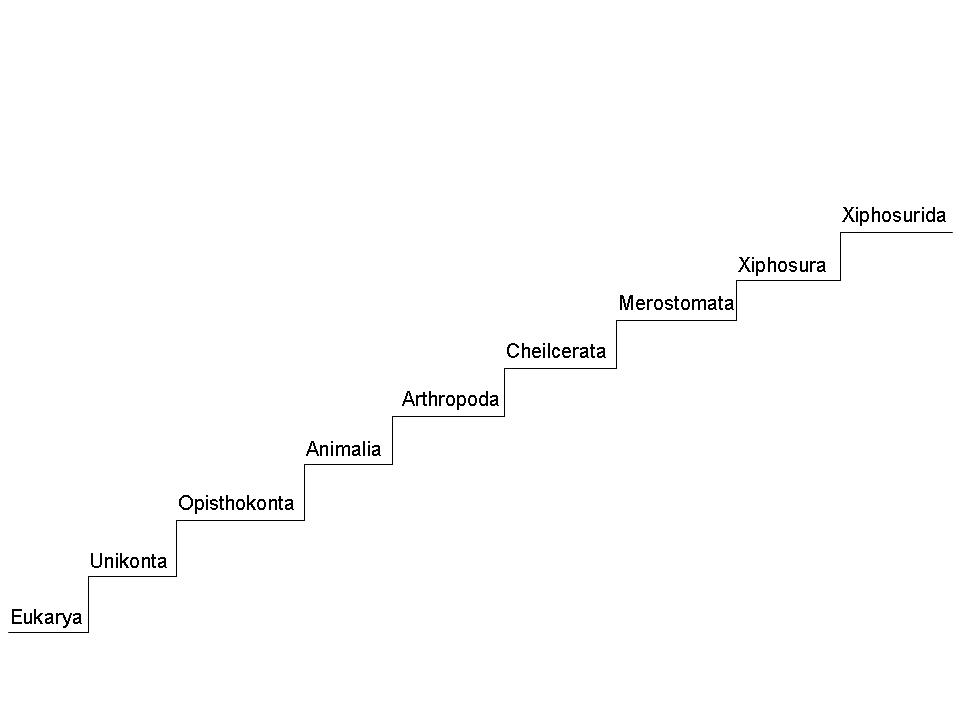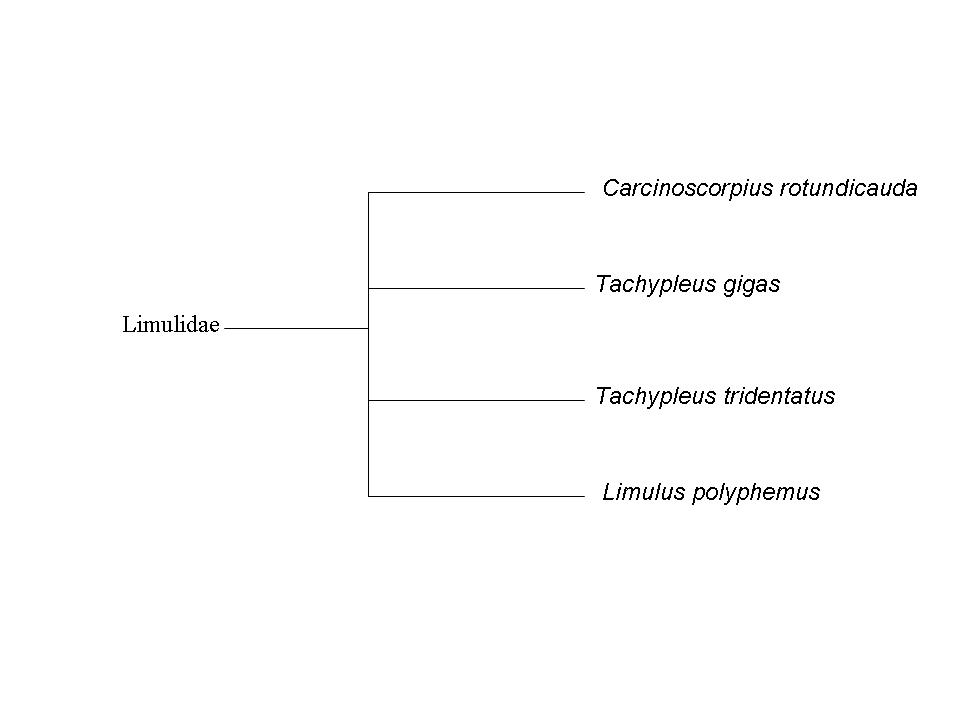Break it Down Now!
A Limulus polyphemus in
a nutshell...
Domain: Eukarya
Kingdom: Animalia
Phylum: Arthropoda
Subphylum: Cheilcerata
Class: Merostomata
Subclass: Xiphosura
Order: Xiphosurida
Family: Limulidae
Genus:
Limulus
Species:
polyphemus
Young child examining an empty horseshoe
crab shell.
Photographer: Mary Hollinger, NODC
biologist, NOAA
What Exactly Am I?
Domain: Eukarya
A horseshoe crab is apart of the eukarya
domain because it is a multicellular species
whose cells contain a true nucleus as well
as membrane bound organelles.
Kingdom: Animalia
This organism is part of the animalia
kingdom because it is multicellular and has
to obtain food by eating and digesting other
organisms which means that they are
heterotrophic. Their cells have a cell
membrane but not a cell wall which is
another characteristic of the animalia
kingdom.
Phylum: Arthropoda
A horseshoe crab is part of the phylum arthro poda. It has five pairs of
jointed-legs and is also a invertebrate,
meaning an animal without a
backbone. This organism has a chitinous
exoskeleton and grows by molting. Want to learn more about some different
arthropods? Click
here to explore the world of the deer
tick and
here for the yetti crab!
poda. It has five pairs of
jointed-legs and is also a invertebrate,
meaning an animal without a
backbone. This organism has a chitinous
exoskeleton and grows by molting. Want to learn more about some different
arthropods? Click
here to explore the world of the deer
tick and
here for the yetti crab!
Above: An overturned horseshoe
crab.
Subphylum: Chelicerata
A horseshoe crab is part of the cheilcerata because it lacks jaws.
Class: Merostomata
The horseshoe crab is a merostomata
because its legs surround the mouth.
Subclass: Xiphosura
The horseshoe crab has a sword tail which
the Xiphos- Greek prefix means sword. The –ura
suffix means tail therefore placing it in
the Xiphosura subclass.
Order: Xiphosurida
A horseshoe crab is part of the xiphosurida order because it is a
sword-tailed animal.

Family: Limulidae
Members of the limulidae family only
contain the four species of horseshoe crabs,
therefore, limulidae means horseshoe crab.
Genus: Limulus
The horseshoe crab has compound
eyes that are sideways therefore is part of
the Limulus
genus. Limulus is a Latin term
meaning slanting, unusual, or crooked.
Species: polyphemus
The horseshoe crab has simple eyes
located on the front of the shell
categorizing this organism as
polyphemus species. The Greek
term polyphemus signifies a one-eyed giant.
Binomial Name
Limulus polyphemus -Limulus
is a Latin term which means slanting,
unusual, or crooked. -polyphemus is
a Greek term that signifies a one-eyed
giant.
Phylogenetic Trees
This phylogenetic tree represents a broad morphological classification starting with eukarya and increase in complexity as it moves farther down the tree.
The closest relatives to the Limulus polyphemus are shown in this phylogenetic tree which is based on a morphological classification. All members in this tree are part of the family limulidae. Its closest relatives are the three other species of horseshoe crabs located in other areas in the world.
I created both phylogenetic trees above referencing the information from http://www.ceoe.udel.edu/horseshoecrab/ and http://horseshoecrab.org/ as of April 10, 2011.
If you would like to learn about the habitat of the organism click here!
To go back to the home page click here.


